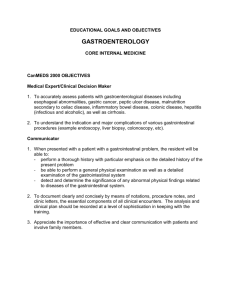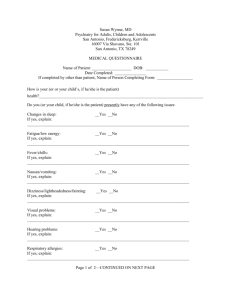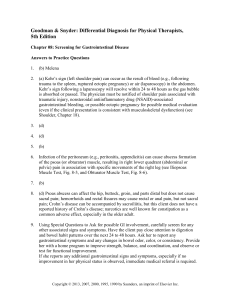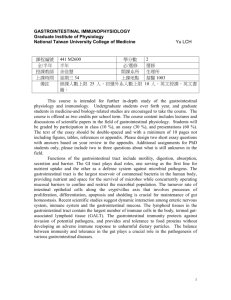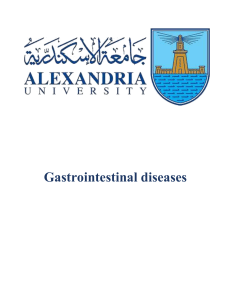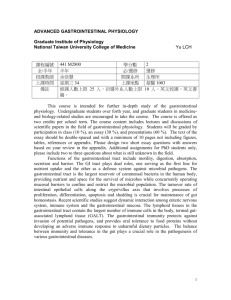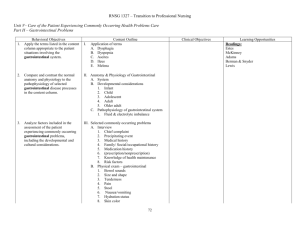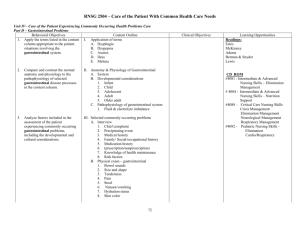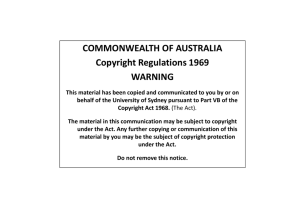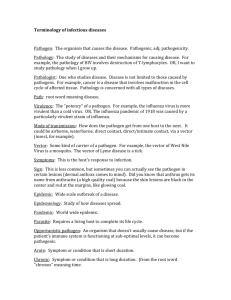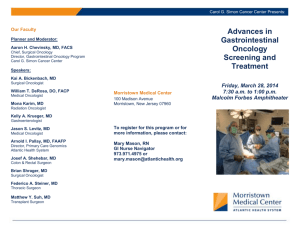Chapter 34: Gastrointestinal Infections & Food Poisoning
advertisement
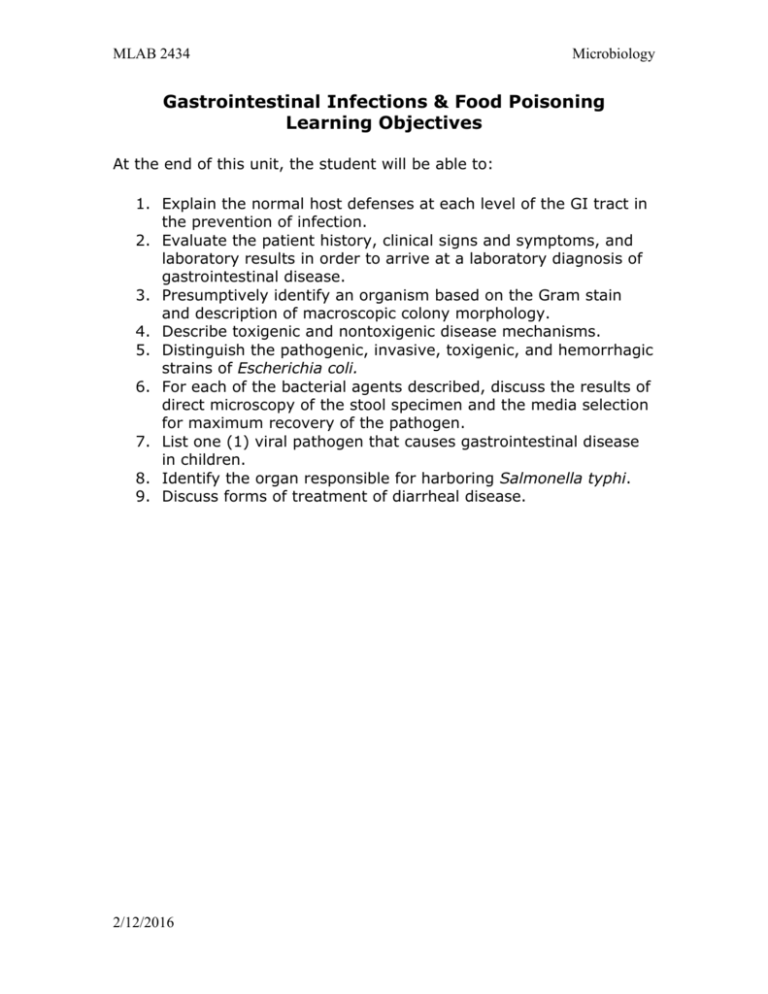
MLAB 2434 Microbiology Gastrointestinal Infections & Food Poisoning Learning Objectives At the end of this unit, the student will be able to: 1. Explain the normal host defenses at each level of the GI tract in the prevention of infection. 2. Evaluate the patient history, clinical signs and symptoms, and laboratory results in order to arrive at a laboratory diagnosis of gastrointestinal disease. 3. Presumptively identify an organism based on the Gram stain and description of macroscopic colony morphology. 4. Describe toxigenic and nontoxigenic disease mechanisms. 5. Distinguish the pathogenic, invasive, toxigenic, and hemorrhagic strains of Escherichia coli. 6. For each of the bacterial agents described, discuss the results of direct microscopy of the stool specimen and the media selection for maximum recovery of the pathogen. 7. List one (1) viral pathogen that causes gastrointestinal disease in children. 8. Identify the organ responsible for harboring Salmonella typhi. 9. Discuss forms of treatment of diarrheal disease. 2/12/2016
